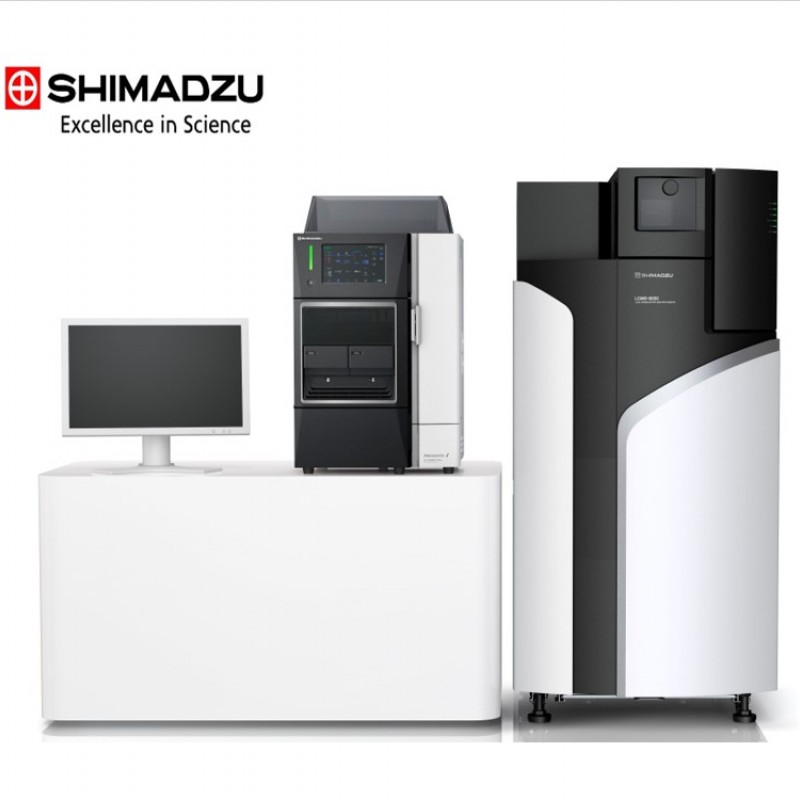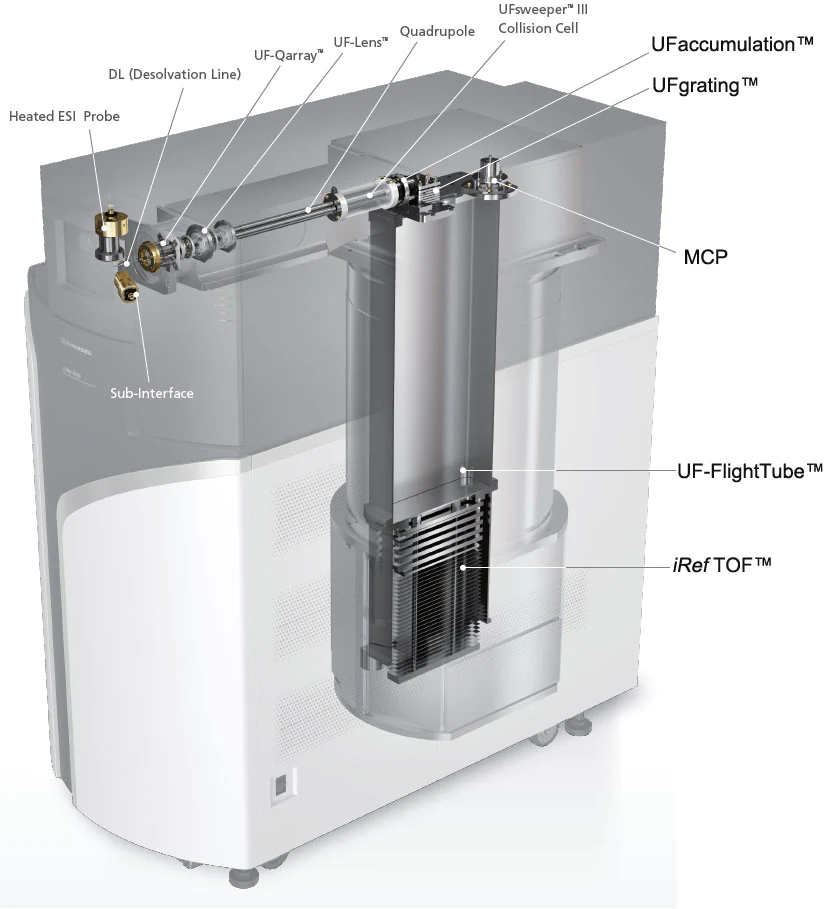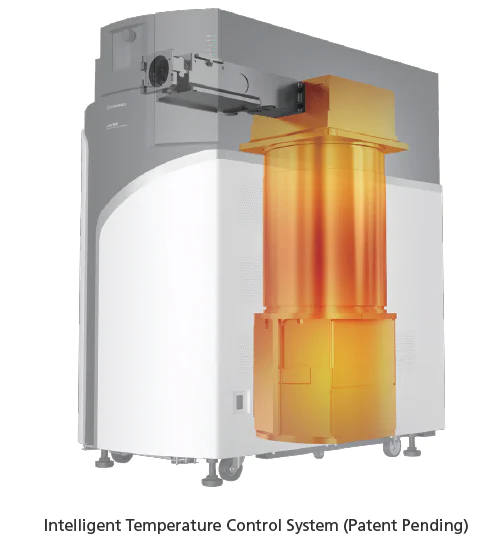


LCMS-9030 Liquid Chromatography Tandem Mass Spectrometer, quadrupole time-of-flight (Q-TOF) mass spectrometer, is a powerful instrument that combines the world's fastest and most sensitive quadrupole technology with TOF (Time-of-flight) capabilities for accurate mass measurement.
LCMS-9030 Q-TOF MS system provides superior sensitivity for quantitative and qualitative analysis of samples over a wide range of concentrations, including ultra-trace compounds. Patented technologies provide high resolution and excellent mass measurement accuracy (MMA), supporting structure annotation and identification of unknown compounds. High throughput is achieved with Shimadzu's unique acceleration technologies designed for high-speed data collection.

Ion accumulation in the collision cell, synchronized perfectly with short cycles of data acquisition, maximizes sensitivity.
Mass accuracy needs mass stability. Shimadzu's temperature-controlled UF-FlightTube requires less frequent calibration, enabling you to run more samples.
Mass measurement accuracy (MMA) is the key performance attribute underlying all application fields using high-resolution accurate-mass (HRAM) spectrometers. LCMS-9030 Quadrupole Time-of-flight Mass Spectrometer delivers the MMA needed for high-confidence identification of unknown compounds at an unprecedented level of stability.
This is made possible by new technologies implemented in the Intelligent Temperature Control System and the UF-FlightTube that accurately offset the changes occurring to both internal and external environments. With the LCMS-9030 Tandem Spectrometer, Shimadzu aims to totally refashion the HRAM user experience, enabling scientists to run more samples at longer calibration intervals with greater confidence and ease.

Shimadzu’s Intelligent Temperature Control System ensures stable MMA even in laboratory environments susceptible to temperature changes. To demonstrate, standards ranging from 150 to 1700 Da were analyzed continuously after a single calibration. Normal laboratory temperature fluctuation was observed between 25°C and 28°C.
Without additional mass correction, the measured accurate masses of all compounds remained within 1 ppm of the theoretical mass for the 60-hour duration of the experiment. With the LCMS-9030 Q-TOF MS, laboratory productivity can be increased by running long, calibration-free batches with confidence.
MS/MS spectra are a key tool for structural elucidation of unknown compounds, and ease of data interpretation is directly dictated by the MMA of MS/MS acquisition. This makes the LCMS-9030 an ideal instrument for structural analysis as its MS/MS mode achieves equally high MMA as the MS mode, thanks to the collision cell technologies that generate high-abundance fragment ions.
The results of MS/MS structural analysis of cyclosporine are shown below. Numerous ions were matched with putative fragment structures at less than 1 mDa mass error. Formula prediction results for m/z 567.3860 at different mass error tolerances demonstrate the impact of MS/MS MMA in making the prediction unambiguous.

LCMS-9030 Tandem Mass Spectrometer produces the high-resolution accurate mass data needed to distinguish between compounds having the same nominal mass. Three isobaric compounds, 4-Hydroxytriazolam, α-Hydroxytriazolam, and α-Hydroxy-etizolam, were analyzed in whole blood at 10 ng/mL.
Even with incomplete chromatographic separation, each compound was detected as an isolated ion without cross talk. Another isobaric pair, Triazolam and Etizolam, also demonstrates the ability of the LCMS-9030 to isolate ions that differ by only 0.0267 amu. Quantitation can be improved by the isolation of analytes from isobaric interferences.

|
ESI (standart)
|
APCI (optional)
|
DUIS™ (optional)
|
 |
 |
 |